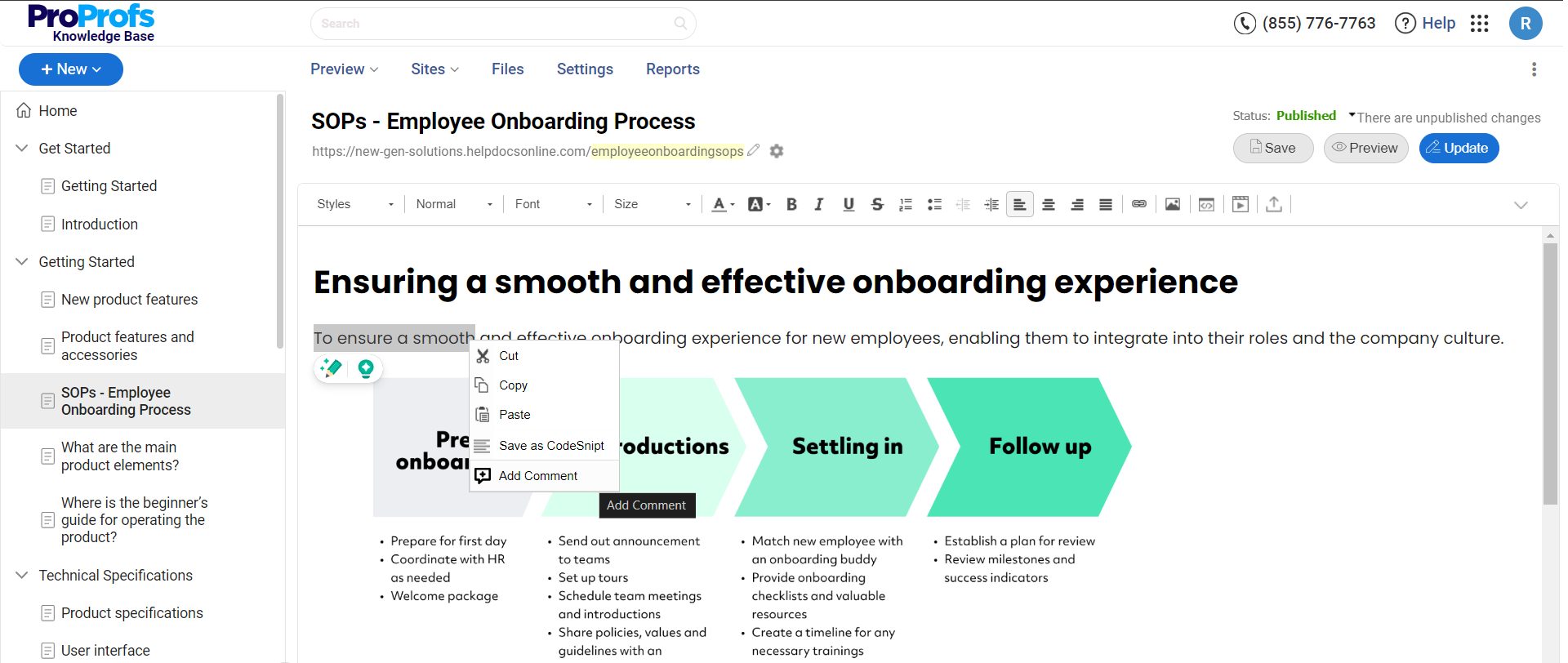Large companies with complex organizational structure—thus, a repository of disparate knowledge across its various business units—should leverage knowledge acquisition to improve their overall efficiency. Although knowledge acquisition is commonly associated with a manufacturing company’s research and development goal, it can be utilized also for other business processes, namely: I.T., operations and, to a degree, customer service through self-service knowledge base.
Thanks to a broad range of SaaS applications like ProProfs LMS, knowledge acquisition with its techniques and applications we’ll discuss below is now viable and accessible to businesses with limited–or none at all–background on this field.
The realization that the acquisition of domain expert knowledge is one of—if not the most— critical tasks in the knowledge engineering process came about as expert systems scaled up from demo prototypes to enterprise applications.
The first stage in the knowledge value chain—knowledge acquisition—describes the initial tasks needed to develop an expert system. Currently, it involves locating and interviewing domain experts and capturing their knowledge via rules, objects, and frame-based ontologies, all of which add value to raw data by configuring them into usable forms.
Issues in Knowledge Acquisition
Knowledge acquisition from subject experts presented unique challenges, mostly because of the following considerations:
- Most knowledge resides in the minds of experts
- This knowledge is mostly in the form of tacit knowledge that is almost impossible to describe
- Experts barely have time apart from their official duties
Techniques Used in Acquiring Knowledge from Experts
To address these issues, special solutions were developed and refined over the years. These approaches are known in the field as knowledge acquisition techniques, which:
- give experts time to leave their jobs for short periods
- allow non-experts to understand the knowledge
- focus on essential knowledge
- secure tacit knowledge
- allow knowledge to be collated from different experts
- allow knowledge to be validated and maintained
Key Knowledge Acquisition Techniques
To acquire, analyze and model knowledge typically involve the following techniques:
- Protocol-generation approaches — types of interviews (unstructured, semi-structured and structured), reporting techniques (via what is called self-report, which is essentially a running commentary of the expert while at work, for example) and observational techniques, preferably through videotaping and retrospective reporting.
- Protocol analysis techniques seek to extract the knowledge objects of the resulting transcript from protocol generation, above. Typically, these include the concepts, attributes, values, tasks, and relationships involved. This serves as a bridge between the use of protocol-based techniques and knowledge modeling techniques.
- Hierarchy-generation techniques: typically in the form of tree diagrams—ladders—covers the creation, reviewing, and modification omple, may be used by the expert in order to add, delete, rename, or re-classify nodes as called for.
- Matrix-based techniques, like the Matrix Tf hierarchical knowledge. A ladder presented on a computer screen or a paper, for example in PCPACK, involves the setting up of grids to represent such connected variables as tasks required against resources at hand, how working hypotheses relate to diagnostic techniques or concepts versus properties. The matrix may utilize text, numbers, colors, or symbols like crosses and ticks.
- Sorting techniques are meant to acquire insight into the attributes and values experts use to sort the properties of concepts, useful in extracting knowledge about classes, properties, and priorities. The most basic is card sorting, while a more advanced form is triadic elicitation.
- Limited-information and constrained-processing tasks are techniques that provide an efficient way to establish the key tasks and information used by limiting either the time or information available to the expert when performing tasks. A rather interesting variant, twenty-questions technique, recalls the parlor game “animal, vegetable and mineral,” wherein the expert guesses what the knowledge engineer is thinking about, with the knowledge engineer responding only yes or no to the expert’s questions. The questions asked and the order in which they are asked give important knowledge such as key properties or categories in a prioritized order.
- Diagram-based techniques rely on the construction of network diagrams that both the knowledge engineer and the expert refer to in order to generate knowledge. The diagrams typically involve concept maps, process maps, and state transition networks, all of which receive strong support from the field. The industry-standard UML (Unified Modeling Language), for example, uses concept maps for object knowledge, state transition networks for dynamic modeling, and process maps for functional modeling. Experimental evidence shows that people more easily understand and apply knowledge if a concept map notation is used rather than predicate logic.
Read More: Tribal Knowledge: Definition, Benefits, and How to Capture It
Applying Knowledge Acquisition Techniques in the Real World
At this point we can proceed to illustrate how the knowledge acquisition techniques discussed above play out in a real-world project, starting with the use of natural techniques then proceeding to more contrived techniques:
- Carry out initial interview—through videotape or audiotape—with the expert to: establish what knowledge is to be acquired; determine to what end the knowledge is to be applied; build understanding of key terminology; and promote rapport with the expert.
- From the recorded interview, transcribe and analyze the resulting protocol. Construct a concept ladder of the generated knowledge and use it to represent the knowledge in the domain. Produce a set of questions from the ladder to cover the essential issues across the domain and serve the goals of the knowledge acquisition project.
- Proceed with a recorded semi-structured interview with the expert using the pre-prepared questions to set up structure and focus.
- From the output of the semi-structured interview, transcribe and analyse the resulting protocol for the available knowledge types—typically concepts, attributes, values, relationships, tasks and rules.
- Represent these knowledge elements as ladders, grids, network diagrams, hypertext, or other appropriate knowledge models. Use hypertext and template headings to document explanations, illustrations, and anecdotes in a structured manner.
- Follow up with contrived techniques such as laddering, think-aloud problem-solving, twenty questions and repertory grid using the resulting knowledge models and structured text. This will allow the expert to tweak and expand the knowledge already captured.
- Repeat the analysis, model building and acquisition sessions until the expert and knowledge engineer are happy that the goals of the project have been met.
- Validate the knowledge acquired with other experts and make modifications where necessary.
Recently, a re-use-based approach to knowledge acquisition has been recognized. Developing knowledge through ontologies can be made to conform to standards such as the Web Ontology Language (OWL). Standardized knowledge could then be shared across a broad community of knowledge workers, successfully implemented in the field of bioinformatics.
FREE. All Features. FOREVER!
Try our Forever FREE account with all premium features!







